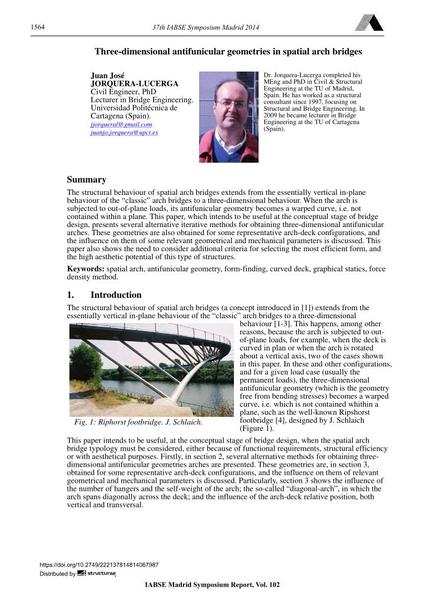Three-dimensional antifunicular geometries in spatial arch bridges

|
|
|||||||||||
Bibliographic Details
| Author(s): |
Juan José Jorquera-Lucerga
|
||||
|---|---|---|---|---|---|
| Medium: | conference paper | ||||
| Language(s): | English | ||||
| Conference: | IABSE Symposium: Engineering for Progress, Nature and People, Madrid, Spain, 3-5 September 2014 | ||||
| Published in: | IABSE Symposium Madrid 2014 | ||||
|
|||||
| Page(s): | 1564-1571 | ||||
| Total no. of pages: | 8 | ||||
| Year: | 2014 | ||||
| DOI: | 10.2749/222137814814067987 | ||||
| Abstract: |
The structural behaviour of spatial arch bridges extends from the essentially vertical in-plane behaviour of the “classic” arch bridges to a three-dimensional behaviour. When the arch is subjected to out-of-plane loads, its antifunicular geometry becomes a warped curve, i.e. not contained within a plane. This paper, which intends to be useful at the conceptual stage of bridge design, presents several alternative iterative methods for obtaining three-dimensional antifunicular arches. These geometries are also obtained for some representative arch-deck configurations, and the influence on them of some relevant geometrical and mechanical parameters is discussed. This paper also shows the need to consider additional criteria for selecting the most efficient form, and the high aesthetic potential of this type of structures. |
||||
| Keywords: |
form-finding force density method spatial arch curved deck antifunicular geometry graphical statics
|
||||
